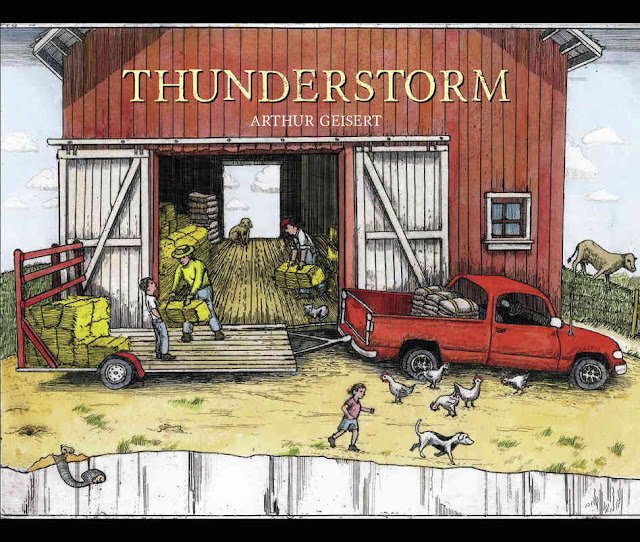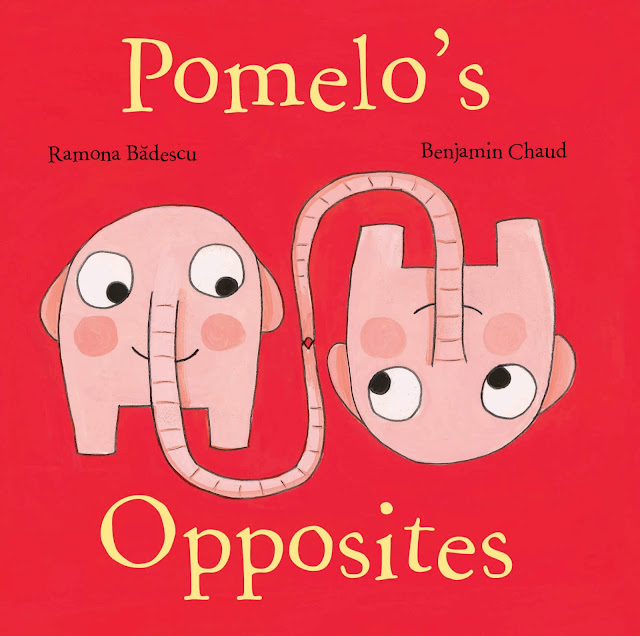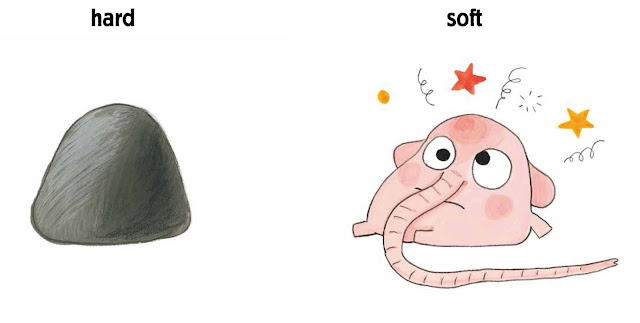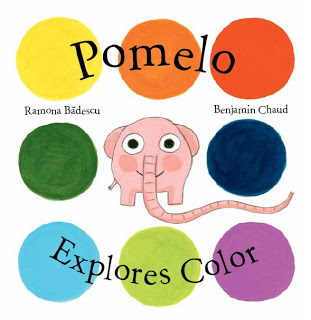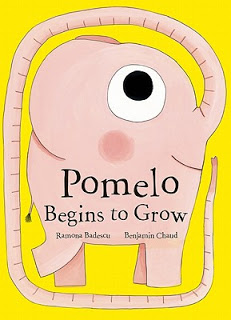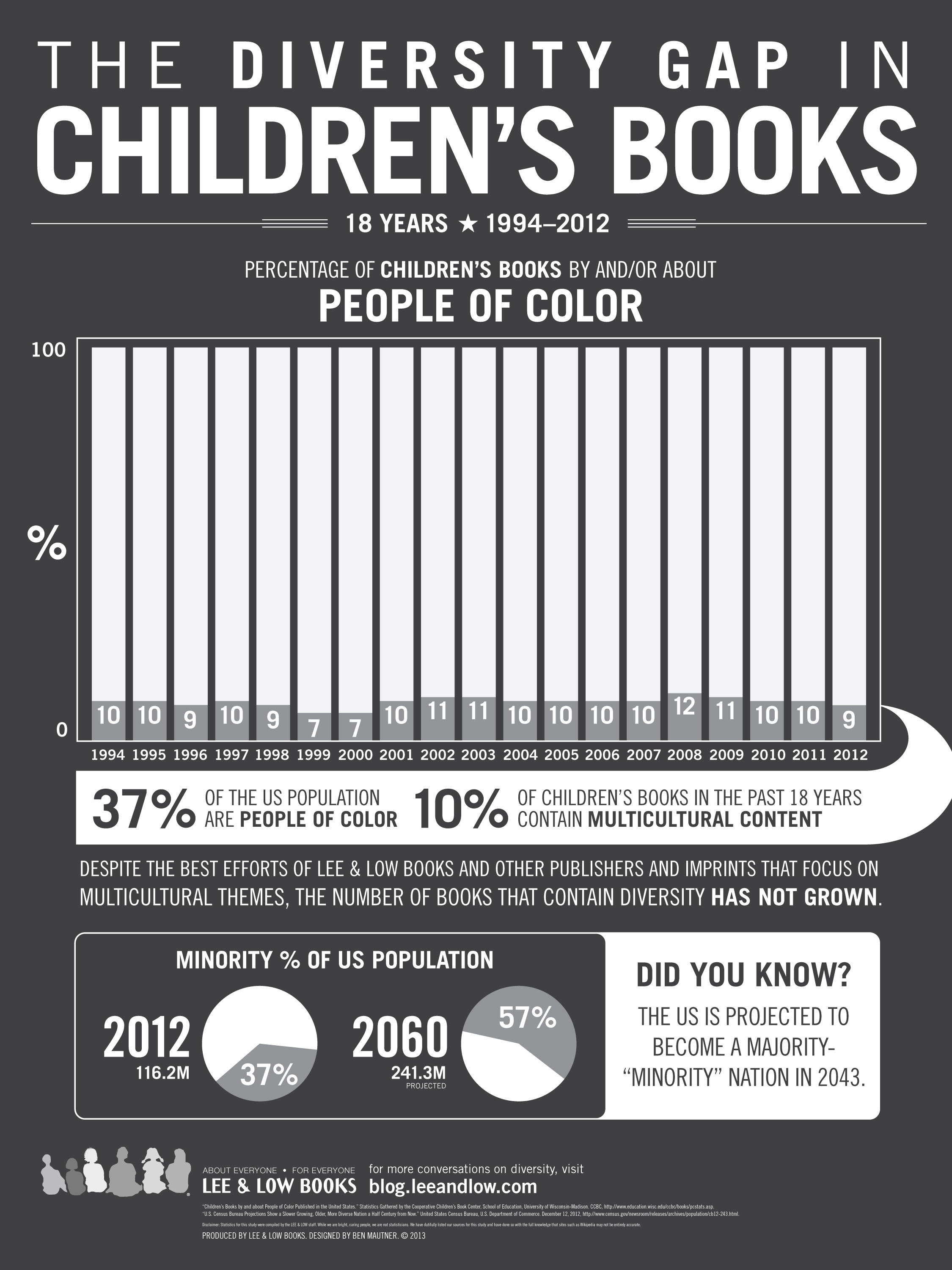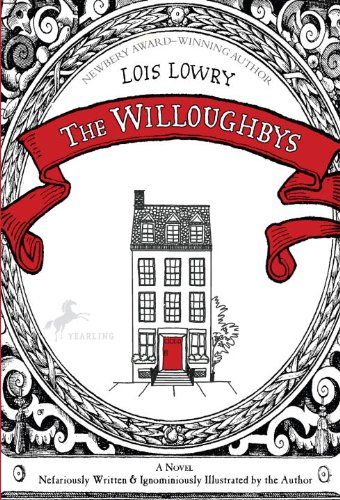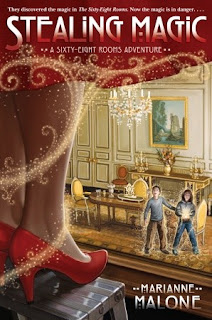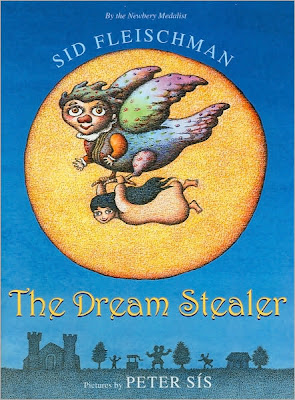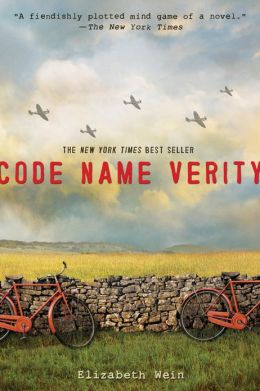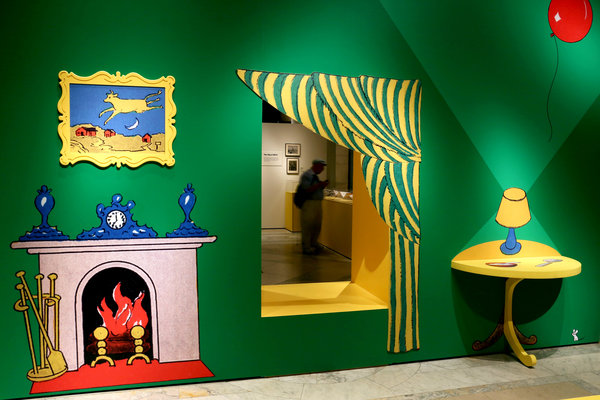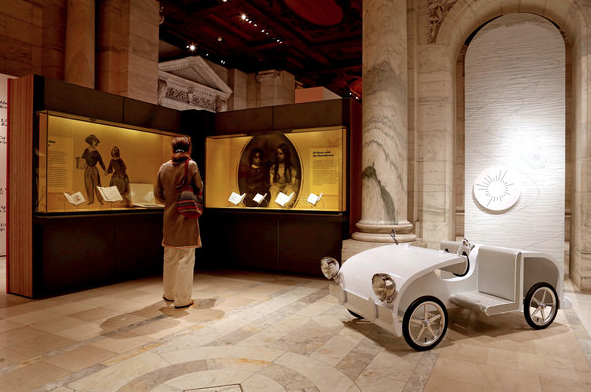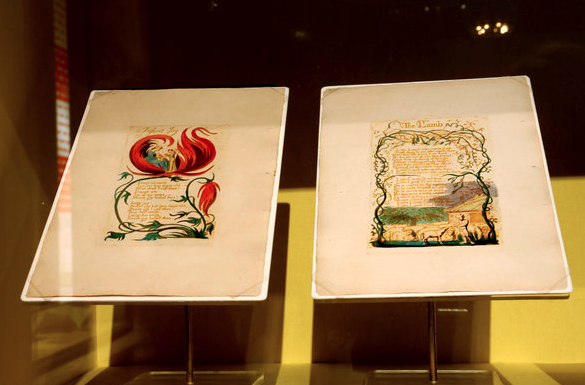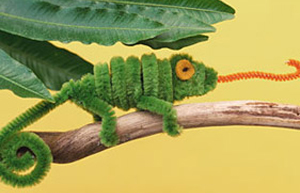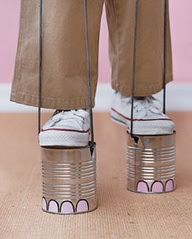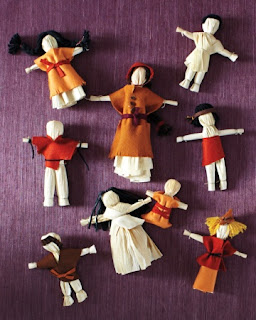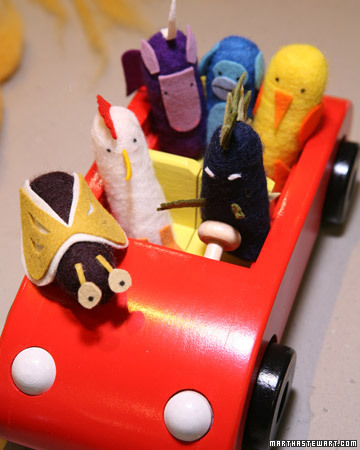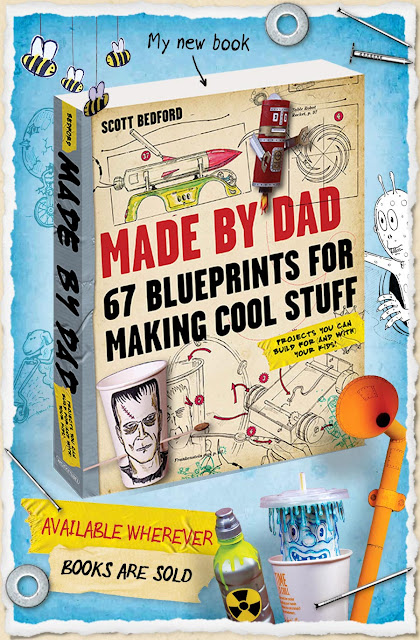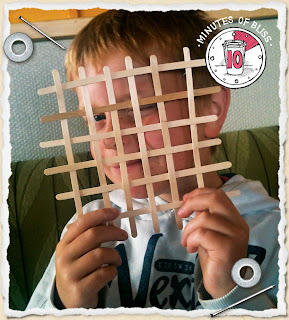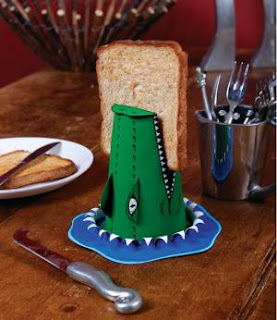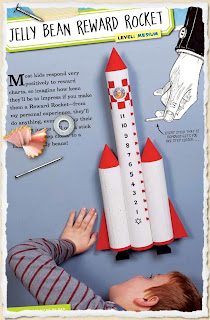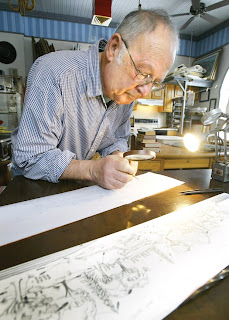 Arthur Geisert has long been a favorite of mine - ever since my oldest son and I discovered his books at the library more than 10 years ago. Since then, I have done my best to buy, read out loud and review as many of Geisert's books as I can get my hands on, although some, sadly, are out of print. A few years ago, Geisert's books, which are made from etchings and can take three years to create (for an incredible visit to Geisert's home studio, scroll down for two different clips, one is less than two minutes and one is almost fifteen and either are worth your time) found a home with the amazing Enchanted Lion Books and it seems like he is getting a bigger share of the attention he deserves. Recently, Rebecca Hersher visited Bernard, Iowa (population 98) where Geisert lives and works in the renovated bank that he bought a few years ago for her piece on Geisert for NPR's All Things Considered. Geisert's book launch for Thunderstorm at Coe's Bar in Bernard resulted in more than 500 signed copies of his book being sold. Thunderstorm has the largest trim size of any of Geisert's books I have seen and it is beautifully packaged, the etchings printed on thick, creamy pages, the covers sturdy and graced with the same illustration found on the dust jacket.
Arthur Geisert has long been a favorite of mine - ever since my oldest son and I discovered his books at the library more than 10 years ago. Since then, I have done my best to buy, read out loud and review as many of Geisert's books as I can get my hands on, although some, sadly, are out of print. A few years ago, Geisert's books, which are made from etchings and can take three years to create (for an incredible visit to Geisert's home studio, scroll down for two different clips, one is less than two minutes and one is almost fifteen and either are worth your time) found a home with the amazing Enchanted Lion Books and it seems like he is getting a bigger share of the attention he deserves. Recently, Rebecca Hersher visited Bernard, Iowa (population 98) where Geisert lives and works in the renovated bank that he bought a few years ago for her piece on Geisert for NPR's All Things Considered. Geisert's book launch for Thunderstorm at Coe's Bar in Bernard resulted in more than 500 signed copies of his book being sold. Thunderstorm has the largest trim size of any of Geisert's books I have seen and it is beautifully packaged, the etchings printed on thick, creamy pages, the covers sturdy and graced with the same illustration found on the dust jacket.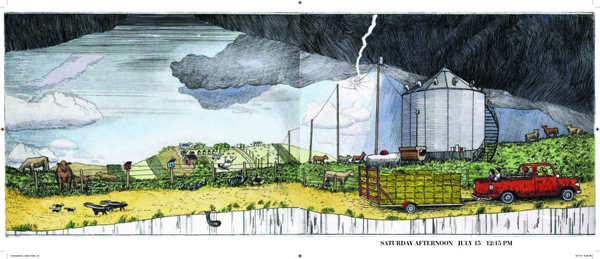
 Like his book Haystack, Thunderstorm unfolds over over a period of time. However, where the story of the haystack takes seasons to tell, the events of Thunderstorm play out over a matter of hours, the timestamps serving as the only text in the book. One of the most amazing things about Thunderstorm is the fact that the illustrations are continuous and could be, and actually were, displayed from end to end in Geistert's studio. The story follows a Midwestern family in a red truck with a trailer as they make a hay delivery. Cutaways reveal animals in their burrows, barns with owls in the rafters and the house of friends with a leaky roof. As the family travels through the countryside, so does a growing storm. The sky darkens, the rain falls and twisters wreak havoc.
Like his book Haystack, Thunderstorm unfolds over over a period of time. However, where the story of the haystack takes seasons to tell, the events of Thunderstorm play out over a matter of hours, the timestamps serving as the only text in the book. One of the most amazing things about Thunderstorm is the fact that the illustrations are continuous and could be, and actually were, displayed from end to end in Geistert's studio. The story follows a Midwestern family in a red truck with a trailer as they make a hay delivery. Cutaways reveal animals in their burrows, barns with owls in the rafters and the house of friends with a leaky roof. As the family travels through the countryside, so does a growing storm. The sky darkens, the rain falls and twisters wreak havoc.
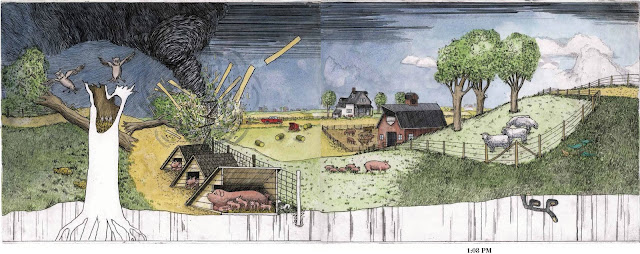
We see families bringing in laundry, herding animals and preparing for whatever destruction is ahead. The red truck breaks down but neighbors help repair it and it's back on the road, but soon they are taking shelter under a stone bridge as the twister passes over them. There is lightning, sheets of rain and wind that rips trees and houses from the ground. Geisert captures the changing color of the sky as the storm progresses. He also captures what happens after a storm on the final pages of his book - the coming together of the community to help clean up and rebuild, throwing tarps over roofs and mopping up basements. As with all Geisert's books, repeated readings will reveal more and more details.
Source: Purchased
